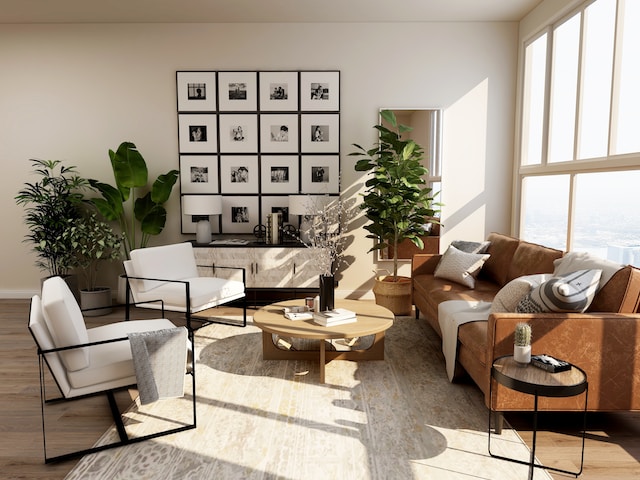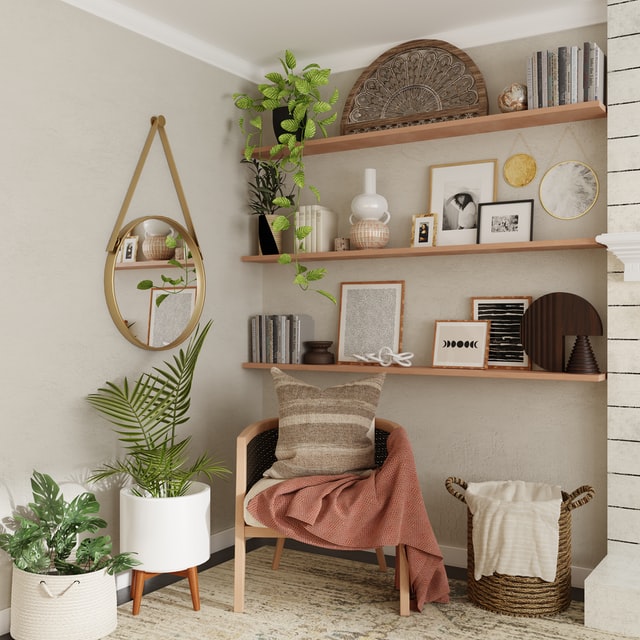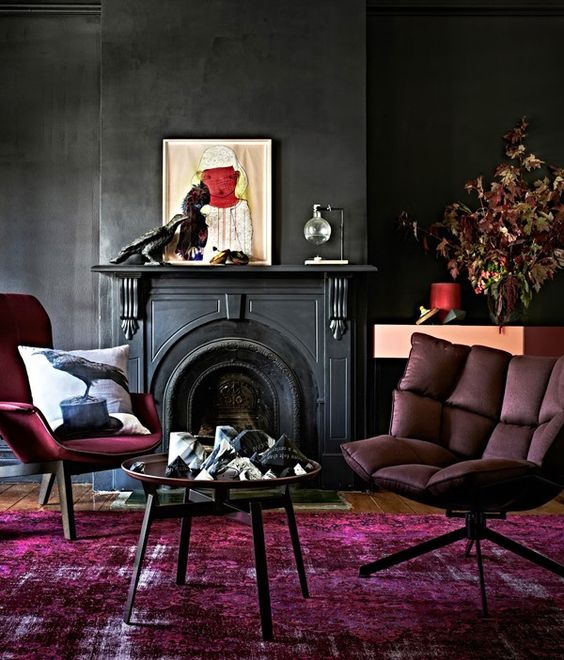The Best Low Light Houseplants For Dark Rooms
It’s no surprise that houseplants bring some amazing benefits into our homes! For rooms with less light than usual, you can still reap the benefits houseplants can bring. By using some of the best low light houseplants, perfect for darker room conditions.
Not only do plants look beautiful, but they can also help reduce stress, improve our sleep, and even purify the air in our homes. This means that houseplants can get rid of airborne chemicals such as benzene, formaldehyde, and toluene.
Best Low Light Houseplants
While most houseplants need bright, indirect light to grow at their best, some fantastic varieties can actually tolerate low-light conditions. These plants thrive in shady areas, ideal for rooms with north or west-facing windows that don’t usually receive a lot of sunlight.
This is a godsend for interior designers because even dark rooms can be brightened up with the addition of plants. Low-light houseplants can open up even more biophilic design possibilities within our homes.
Here are 20 of the best low-light houseplants!
1. Cast Iron Plant
(Aspidistra elatior)

Cast iron plants are one of the best low-light houseplants because they’re virtually indestructible. These hardy plants could even tolerate the smoggy conditions of Victorian homes.
Cast iron plants have large, dark green leaves that make an excellent statement piece. Water cast iron plants when the top few inches of soil are dry and keep them at room temperature.
Pros: Extremely hardy. Don’t require much watering
Cons: Can be vulnerable to overwatering
Best Feature: Virtually indestructible
2. Bird’s Nest Fern
(Asplenium nidus)
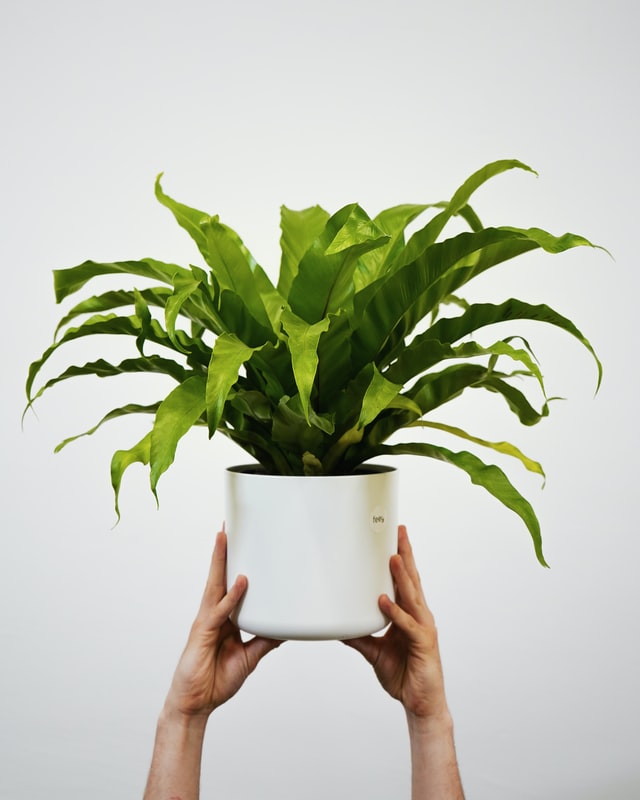
Bird’s nest ferns have long, lance-like leaves with distinctive crinkled edges. These fronds can reach approximately 2-feet long. Bird’s nest ferns are an excellent way to add texture and vibrant green colour to shaded rooms.
These ferns prefer a humid spot, so bathrooms are ideal. Give them a drink when the top inch of the soil is dry.
Pros: Beautiful long leaves. Great for bathrooms.
Cons: Fronds can be fragile.
Best Feature: Interesting colour and texture.
3. Boston Fern
(Nephrolepis exaltata)
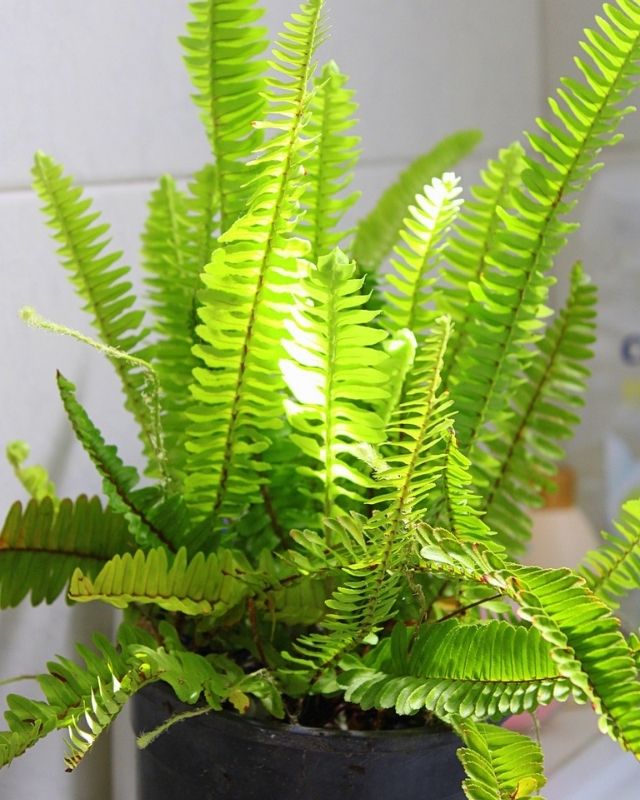
Boston ferns are extremely popular houseplants for a reason – they can tolerate low-light conditions beautifully. These ferns have delicate, bushy foliage that can easily fill empty spaces.
Boston ferns are also one of the air purifying plants studied by NASA. The ferns require high humidity levels and need a bit of help in dry homes – a bathroom is perfect.
Pros: Excellent at filling space. Beautiful bushy foliage.
Cons: Small leaves can be quite delicate. Needs humid conditions.
Best Feature: Good at purifying the air.
4. Chinese Evergreen
(Aglaonema spp.)
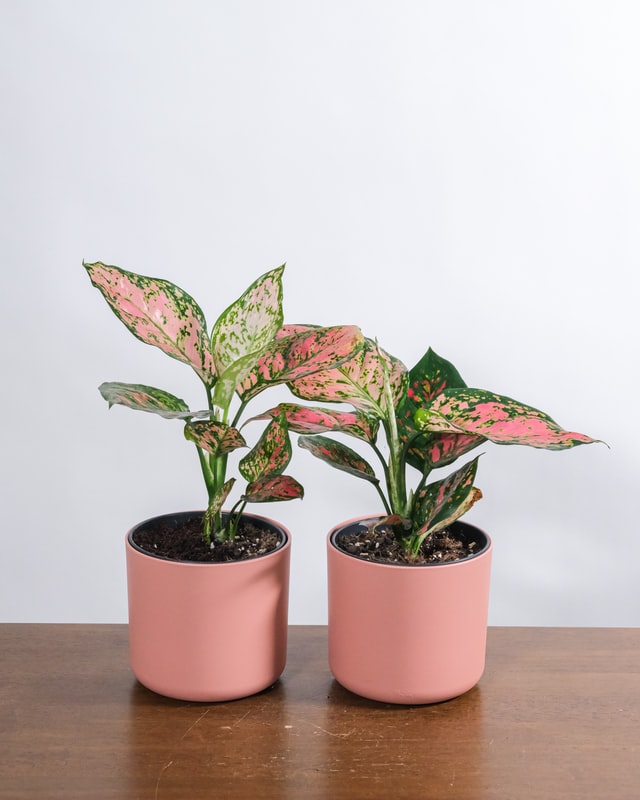
Chinese evergreens are a stunning group of houseplants that come in several striking varieties. Most have blade-like leaves that have prominent patterns and intense accent colours such as red, silver, or pink.
Chinese evergreens are pretty compact. And thrive in low-light conditions as long as they have plenty of warmth and humidity. They ideally need to be kept above 18ºC, so cold drafts from window vents are a no-no. Chinese evergreens are another of NASA’s air purifying plants.
Pros: Able to purify the air. They end to stay compact.
Cons: Can’t tolerate colder conditions.
Best Feature: Stunning range of patterns and colours.
5. Snake Plant
(Dracaena trifasciata)

These classic succulents are some of the best low-light houseplants. Snake plants are known for their tall, spear-shaped leaves that often sport interesting patterns.
Snake plants prefer warm temperatures and low humidity but can tolerate shady spots. These low-maintenance plants only need watering every two weeks but are susceptible to overwatering.
Pros: Striking colours and patterns.
Cons: Vulnerable to overwatering.
Best Feature: Low-maintenance.
6. Calatheas
(Calathea spp.)
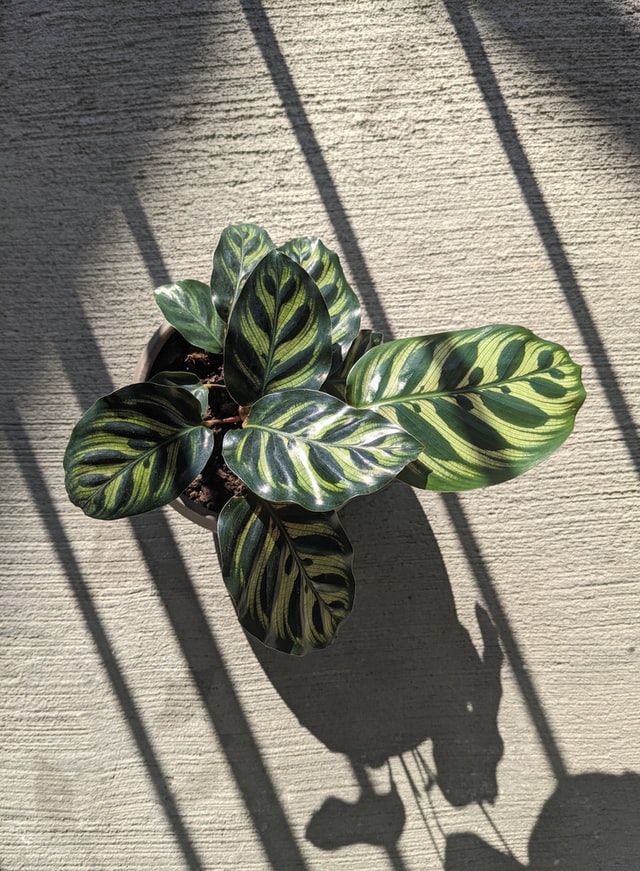
Calatheas are some of the most well-known houseplants and with good reason. There are several gorgeous types of calathea, such as the peacock plant (Calathea makoyana). And the zebra plant (Calathea zebrina).
Each variety provides beautiful colours and elaborate patterns to fit any style. Most species have the same care requirements – consistently moist (but not waterlogged) soil, high humidity, and warm temperatures.
Pros: Gorgeous colours and patterns. Safe for pets.
Cons: A bit fussy about humidity and heat
Best Feature: A fantastic range of varieties to suit any room
7. Leopard Lily
(Dieffenbachia spp.)
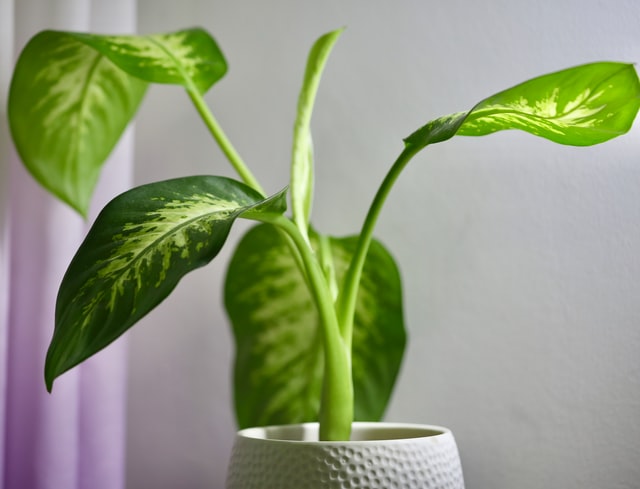
Better known as dumb canes, mother of tongue and leopard lily, dieffenbachias are some of the best low-light houseplants. Have a look at this growing guide for dieffenbachias.
These colourful plants hail from the jungles of Central and South America. Their broad leaves are usually green with different variegated patterns, adding a splash of colour to darker rooms. Dieffenbachias need warm, humid conditions to thrive and will struggle below 15ºC.
Pros: Several varieties to choose from. Can grow quickly to fill any space.
Cons: Toxic humans and to pets.
Best Feature: Colourful and variegated foliage that really brightens up a room.
8. Pothos
(Epipremnum aureum)

Sometimes better known as devil’s ivy, pothos plants are beautiful, fast-growing trailing vines. They come in neon and variegated varieties and are exceptionally low-maintenance.
As long as the temperature stays above 10ºC and they’re not overwatered, pothos are happy. Their gorgeous trailing leaves can be trained to create a living wall or coil around shelves or bedposts. Opening up some fascinating design possibilities.
Pros: Low-maintenance and easy to grow. Happy in most conditions.
Cons: Toxic to pets.
Best Feature: Trailing vines create some exciting style options
9. Satin Pothos
(Scindapsus pictus)

Like their cousins above, satin pothos plants are incredibly easy to grow in most homes. These stunning vines have large, heart-shaped green leaves with silver variegation.
The vines can easily be trained to trail along a wall or cascade from hanging baskets. Satin pothos can work with a slightly different colour palette than other pothos varieties thanks to their silver streaks.
Pros: Hardy and low-maintenance. Easy to grow quickly
Cons: Toxic to cats, dogs, and other pets.
Best Feature: Silver variegation opens up fresh colour and style combinations.
10. Spider Plants
(Chlorophytum comosum)

Spider plants make some of the best low-light houseplants because a bit of shade really enhances their colours. Spider plants produce long leaves that often have combinations of dark green and white colours.
Too much light can cause these patterns to fade, so they’re better suited to shady conditions. Spider plants are also one of the easiest houseplants to grow and propagate. Spider plants need moist soil and temperatures that remain above 10ºC.
Pros: Can help purify the air. It has lovely long leaves that are perfect for hanging baskets.
Cons: Can be fussy about light and temperature
Best Feature: Low-maintenance and easy to grow.

11. Lucky Bamboo
(Dracaena sanderiana)
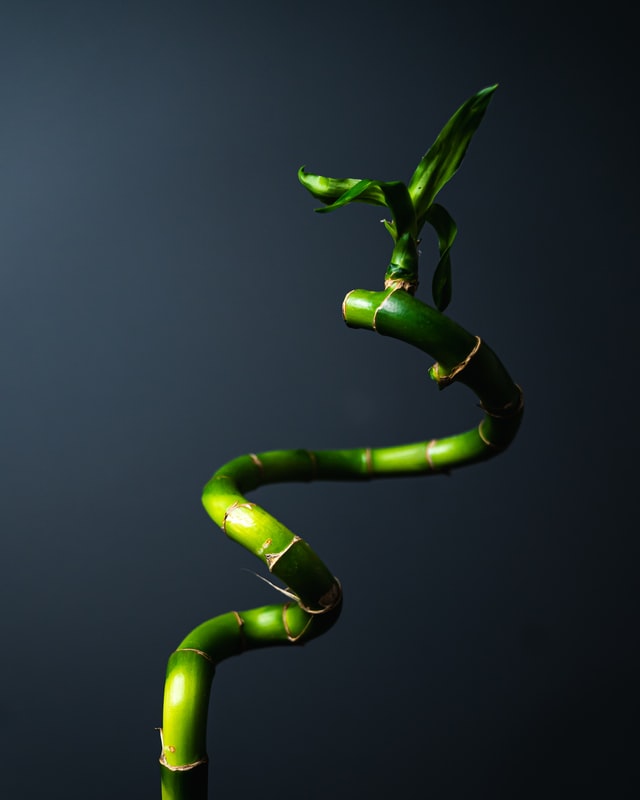
Despite its name, the Lucky bamboo isn’t actually related to bamboo at all. Even so, this houseplant grows just as fast as its namesake. Lucky bamboo plants are fairly hardy, with gorgeous spiralling stems that create interesting style opportunities.
If you’re designing a room with Feng Shui in mind, lucky bamboo is ideal. These unique plants can even grow in just a jar of water, although they do prefer temperatures above 18ºC.
Pros: Fast-growing and low-maintenance. Excellent plants for Feng Shui.
Cons: Toxic to cats and dogs.
Best Feature: Intricately spiralled stems create a unique look.
12. Parlour Palm
(Chamaedorea elegans)

Parlour palms have been in vogue since the Victorians used them to wow visitors in their parlours. These elegant indoor palms can handle most growing conditions, making them easy to maintain.
Parlour palms are pretty slow growers and will stay at a manageable size in shadier rooms. These exotic houseplants were also one of the best performers in NASA’s Clean Air study.
Pros: Exotic, elegant foliage. Easy and low-maintenance.
Cons: Slow growth speed.
Best Feature: One of the best low-light houseplants for purifying the air.
13. Peace Lily
(Spathiphyllum wallisii)

Peace lilies are some of the best low-light houseplants thanks to their glossy, gorgeous green foliage and beautiful white blooms. Although peace lilies that grow in low-light locations probably won’t produce many flowers, they’re much better for their foliage.
These kind of lilies are pretty easy to grow as long as temperatures stay above 12ºC. Peace lilies will famously tell you when they need a drink because their leaves will droop.
Pros: Easy to care for. Excellent at purifying the air.
Cons: Toxic to both pets and people.
Best Feature: Naturally suited to low-light areas.
14. Staghorn Fern
(Platycerium bifurcatum)

Staghorn ferns are one of the most unique ferns to add to your space. These ferns are also one of the best low-light houseplants. Staghorn ferns grow as epiphytes, meaning that they latch themselves onto other plants.
It’s not uncommon to see staghorn ferns growing on wooden wall plaques – making them a great way to install some living art. These ferns only need to be soaked once a week or so to keep them well-watered.
Pros: Fairly low-maintenance. Naturally grow in low-light conditions.
Cons: Watering can be fiddly if grown on a plaque.
Best Feature: Can be used as living art to add some greenery to a drab space.
15. Maidenhair Fern
(Adiantum raddianum)
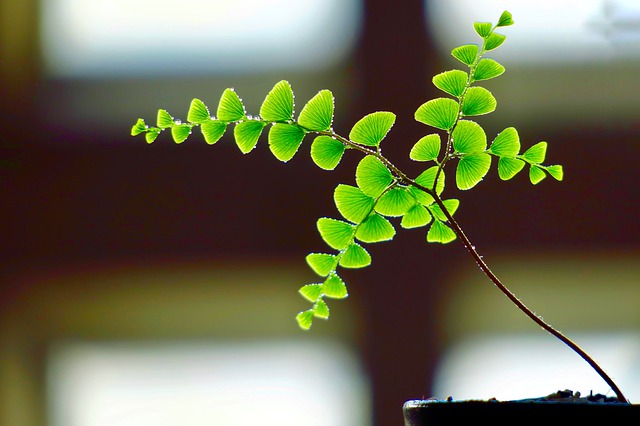
Maidenhair ferns are just as beautiful as their name suggests. The fronds are full of small, delicate fan-shaped leaves in captivating tones of light green.
Maidenhair ferns need high levels of humidity and soil that can hold a bit of moisture. Temperatures need to stay above 15ºC to keep these ferns happy.
Pros: Elegant foliage. Non-toxic to pets.
Cons: Can be fussy about conditions. Leaves are fairly fragile.
Best Feature: Great at brightening up darker spaces.
16. String of Nickels
(Dischidia nummularia)

For a more subtle look, a string of nickels is an ideal low-light houseplant. The leaves of this lovely succulent look like small, delicate green jewels. A string of nickels houseplant looks fantastic when spilling out of a hanging basket or trickling down from a bookshelf.
A string of nickels is an easy, low-maintenance plant that’ll be happy almost anywhere as long as it has moist soil and warm conditions.
Pros: Easy to care for. Gorgeous trailing growth.
Cons: Can be a little small for some spaces.
Best Feature: Great low-light plant for succulent lovers.
17. Heartleaf Philodendron
(Philodendron scandens)

Heartleaf philodendrons are lush, trailing tropical houseplants that thrive in low-light conditions. Their heart-shaped leaves are a deep dark green colour.
These vigorous plants can also be trained to climb up structures like moss poles, adding a vertical design dimension.
Heartleaf philodendrons aren’t particularly fussy plants, which makes them easy to grow. All they need is regular watering and an occasional prune.
Pros: Low-maintenance and easy to grow. Can remove formaldehyde from the air.
Cons: Toxic to pets and humans. Can grow out of control in ideal conditions.
Best Feature: Capable of climbing moss poles and other vertical supports.
18. Prayer Plant
(Maranta leuconeura)
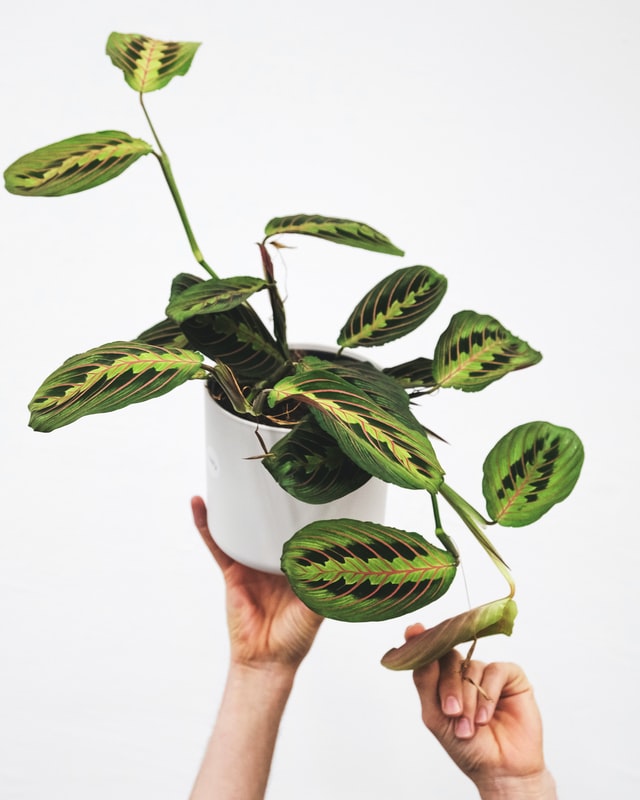
Prayer plants are gorgeous, unique tropical plants that also do well in low-light conditions. Their dark green oval leaves are punctuated by beautiful light green to yellow patterns along the centre of each leaf.
Prayer plants also have the unusual habit of curling up at night before unfurling in the morning. These tropical treats need high temperatures, close to 26ºC max. Prayer plants also need high humidity.
Pros: Unusual, unique curling leaves. Non-toxic to people and pets.
Cons: Need higher temperatures than many houseplants.
Best Feature: Dramatic, beautiful foliage.
19. ZZ Plant
(Zamioculcas zamiifolia)
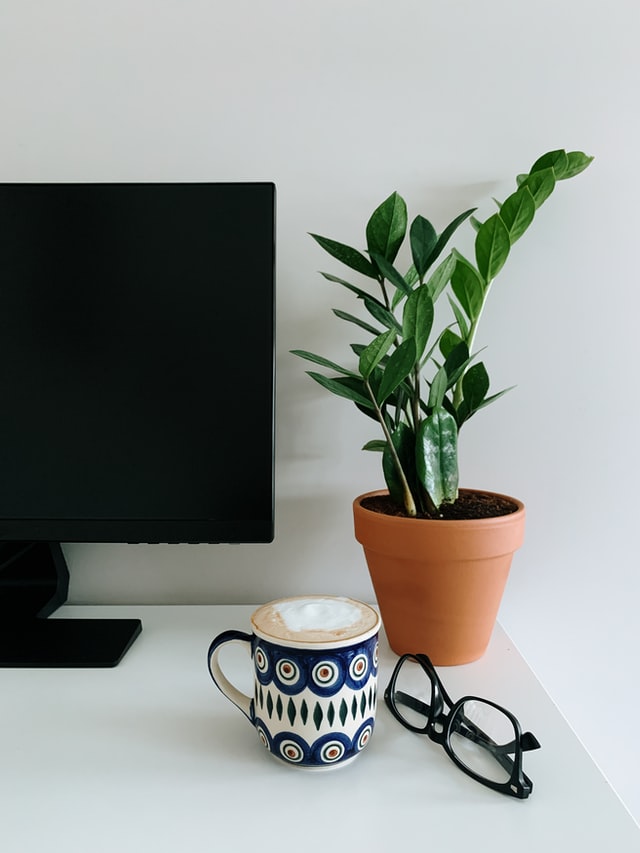
The breathtaking ZZ plant is also known as the Zanzibar gem, and it’s not hard to see why. The waxy, deep green leaves of a ZZ plant look almost like precious stones. ZZ plants are also extremely forgiving, which is great for busy houseplant owners.
These African beauties typically only need a drink every two weeks and prefer normal household temperatures.
Pros: Low-maintenance and drought-tolerant. Glamorous glossy foliage.
Cons: Toxic to humans and pets.
Best Feature: Can survive a bit of neglect and still look fabulous.
20. Bromeliads
(Bromeliaceae spp.)
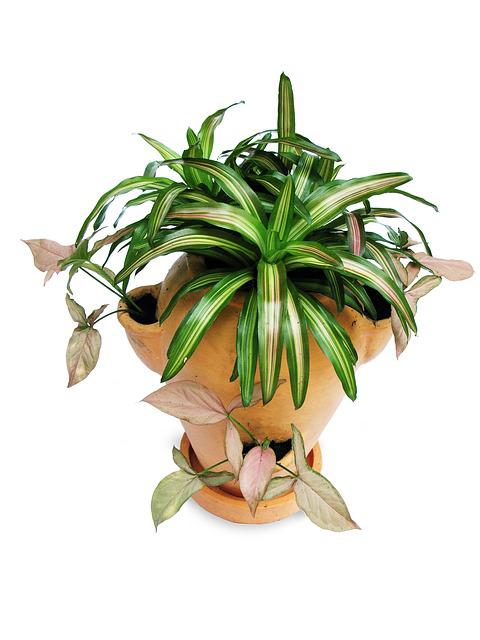
Bromeliads are from a fascinating group of plants that include pineapples. However, bromeliads can be some of the best low-light houseplants. Typically, this means varieties that have softer leaves, such as the Guzmania bromeliads.
These tropical plants can also produce glorious flowers if the conditions are right. Most bromeliads require warm temperatures and moist soil.
Pros: Large range of varieties. Non-toxic for pets and humans.
Cons: Can be tricky to find the right low-light variety.
Best Feature: Can produce fantastic blooms in ideal conditions.
Those are the best low light houseplants you can use in low light areas at home. You don’t have to give up on plant life for dark rooms!
Chloe
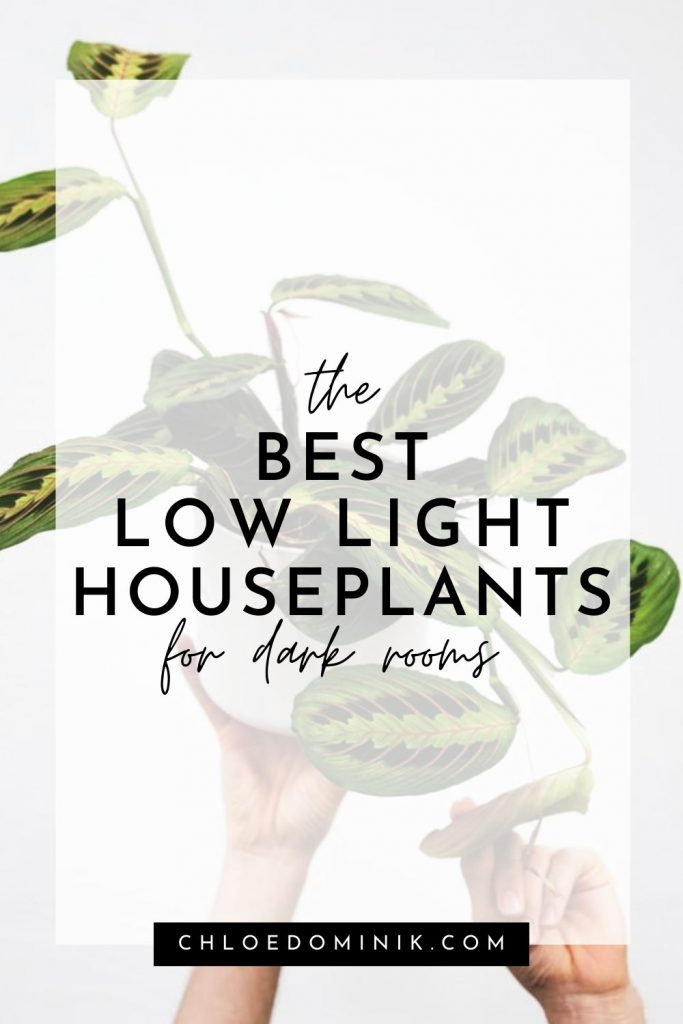
Featured Image Source: Unsplash



